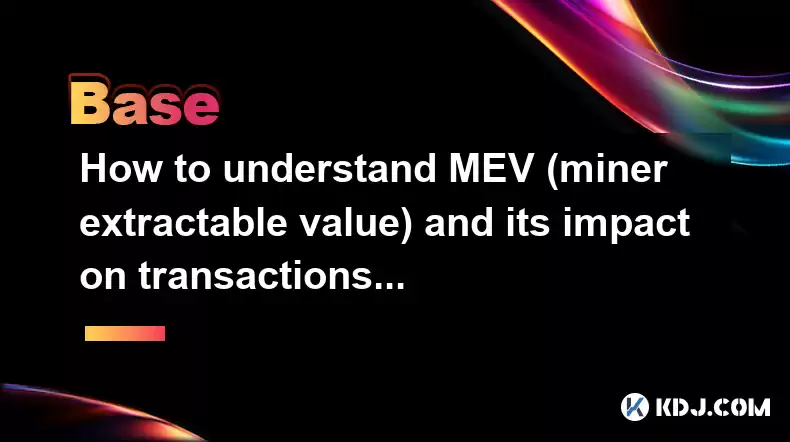-
 Bitcoin
Bitcoin $115000
0.12% -
 Ethereum
Ethereum $3701
4.50% -
 XRP
XRP $3.081
2.99% -
 Tether USDt
Tether USDt $0.0000
-0.01% -
 BNB
BNB $767.9
1.45% -
 Solana
Solana $169.5
3.13% -
 USDC
USDC $0.9999
0.01% -
 Dogecoin
Dogecoin $0.2106
4.30% -
 TRON
TRON $0.3334
1.62% -
 Cardano
Cardano $0.7564
2.54% -
 Stellar
Stellar $0.4165
0.76% -
 Hyperliquid
Hyperliquid $38.75
0.25% -
 Sui
Sui $3.593
3.00% -
 Chainlink
Chainlink $17.08
3.59% -
 Bitcoin Cash
Bitcoin Cash $573.6
4.35% -
 Hedera
Hedera $0.2508
-0.84% -
 Avalanche
Avalanche $23.07
6.46% -
 Ethena USDe
Ethena USDe $1.001
-0.02% -
 Litecoin
Litecoin $120.8
8.17% -
 UNUS SED LEO
UNUS SED LEO $8.943
-0.32% -
 Toncoin
Toncoin $3.400
-5.60% -
 Shiba Inu
Shiba Inu $0.00001255
1.54% -
 Uniswap
Uniswap $9.908
6.32% -
 Polkadot
Polkadot $3.718
2.10% -
 Monero
Monero $303.0
-0.74% -
 Dai
Dai $0.9999
-0.02% -
 Bitget Token
Bitget Token $4.392
0.91% -
 Cronos
Cronos $0.1403
6.31% -
 Pepe
Pepe $0.00001076
1.13% -
 Aave
Aave $267.2
1.80%
How to understand MEV (miner extractable value) and its impact on transactions?
MEV, or Miner Extractable Value, allows miners to profit by manipulating transaction order, impacting fairness and efficiency in blockchain transactions.
Apr 15, 2025 at 07:07 am

Understanding MEV (Miner Extractable Value) and its impact on transactions is crucial for anyone involved in the cryptocurrency ecosystem. MEV refers to the profit a miner can make by including, reordering, or excluding transactions in the blocks they mine. This concept has significant implications for the fairness and efficiency of blockchain transactions.
What is MEV?
MEV stands for Miner Extractable Value, which represents the potential profit miners can extract from manipulating the order of transactions within a block. This value arises from the ability of miners to choose which transactions to include and in what order. For instance, if a miner can front-run a large transaction by including their own transaction first, they can profit from the price movement caused by the large transaction.
How Does MEV Impact Transactions?
The impact of MEV on transactions can be profound. It can lead to issues such as front-running, where miners or other actors insert their transactions ahead of others to capitalize on price movements. This can result in increased transaction fees as users attempt to outbid each other to have their transactions processed first. Additionally, MEV can cause delays in transaction processing, as miners may choose to reorder or exclude certain transactions to maximize their profits.
Types of MEV
There are several types of MEV that can affect transactions:
Front-Running: This occurs when a miner or a third party sees a pending transaction and inserts their own transaction ahead of it to profit from the subsequent price movement.
Back-Running: This is the opposite of front-running, where a miner includes their transaction immediately after a large transaction to benefit from the price change caused by the large transaction.
Transaction Reordering: Miners can reorder transactions within a block to maximize their profit, potentially causing unfairness in the transaction processing order.
Transaction Censorship: Miners might choose to exclude certain transactions from a block if they believe it will increase their profit or if they are incentivized to do so by external parties.
How to Mitigate the Impact of MEV?
There are several strategies that can be employed to mitigate the impact of MEV on transactions:
Using MEV Protection Tools: Some platforms offer tools that protect users from front-running and other forms of MEV. These tools can include transaction batching, where multiple transactions are processed together to minimize the opportunity for manipulation.
Implementing Fair Ordering Protocols: Some blockchain projects are working on protocols that ensure transactions are processed in a fair and transparent manner, reducing the potential for MEV.
Increasing Transaction Privacy: By using privacy-enhancing technologies, users can reduce the visibility of their transactions, making it harder for miners to exploit them for MEV.
Participating in MEV Auctions: Some platforms allow users to participate in auctions where they can bid to have their transactions included in a block, potentially reducing the impact of MEV by ensuring fair access to block space.
Real-World Examples of MEV
To better understand MEV, it's helpful to look at some real-world examples:
DeFi Platforms: On decentralized finance (DeFi) platforms, large transactions can create significant opportunities for MEV. For instance, if a user is about to liquidate a large position, miners can front-run this transaction to profit from the price drop.
NFT Auctions: In the non-fungible token (NFT) market, miners can exploit MEV by front-running bids, potentially affecting the final auction price and the fairness of the auction process.
Stablecoin Arbitrage: Miners can also exploit MEV by taking advantage of price discrepancies between different stablecoins, inserting their transactions to profit from arbitrage opportunities.
How to Identify MEV in Your Transactions?
Identifying MEV in your transactions can be challenging, but there are some signs to look out for:
Unexpected Transaction Delays: If your transaction is taking longer than expected to be processed, it could be a sign that miners are reordering or excluding transactions to maximize MEV.
Higher Than Expected Transaction Fees: If you find yourself paying higher fees than usual, it might be because miners are prioritizing transactions based on MEV rather than the fee amount.
Unexpected Price Movements: If you notice sudden price movements immediately before or after your transaction, it could indicate that miners or other actors are exploiting MEV by front-running or back-running your transaction.
FAQs
Q: Can MEV be completely eliminated from blockchain networks?
A: While it's challenging to completely eliminate MEV, various strategies and protocols are being developed to mitigate its impact and ensure fairer transaction processing.
Q: How does MEV affect the security of blockchain networks?
A: MEV can potentially undermine the security of blockchain networks by incentivizing miners to prioritize profit over the integrity of the network, leading to issues like centralization and transaction censorship.
Q: Are there any regulatory efforts to address MEV?
A: Currently, there are no specific regulatory efforts targeting MEV, but as the issue becomes more prominent, it may attract the attention of regulators seeking to ensure fair and transparent transaction processing.
Q: How can individual users protect themselves from MEV?
A: Individual users can protect themselves from MEV by using MEV protection tools, participating in MEV auctions, and increasing the privacy of their transactions through the use of privacy-enhancing technologies.
Disclaimer:info@kdj.com
The information provided is not trading advice. kdj.com does not assume any responsibility for any investments made based on the information provided in this article. Cryptocurrencies are highly volatile and it is highly recommended that you invest with caution after thorough research!
If you believe that the content used on this website infringes your copyright, please contact us immediately (info@kdj.com) and we will delete it promptly.
- Crypto Airdrops: Your August 2025 Guide to Free Tokens & Opportunities
- 2025-08-05 13:45:13
- Luxury Dining Reimagined: St. Regis Singapore & Marriott's Culinary Celebration
- 2025-08-05 13:45:13
- Fancy Farm Picnic: A Sneak Peek at the 2026 US House Race
- 2025-08-05 13:50:12
- Cardano Price, ADA Forecast & Ethereum Price: What's the Buzz?
- 2025-08-05 13:50:12
- Velo Universe, DEX, and DeFi Security: Navigating the Future of Decentralized Trading
- 2025-08-05 09:25:13
- Bitget Wallet Revolutionizes Solana with Gas-Free Transactions: A New Era for DeFi
- 2025-08-05 09:25:13
Related knowledge

What is the difference between CeFi and DeFi?
Jul 22,2025 at 12:28am
Understanding CeFi and DeFiIn the world of cryptocurrency, CeFi (Centralized Finance) and DeFi (Decentralized Finance) represent two distinct financia...

How to qualify for potential crypto airdrops?
Jul 23,2025 at 06:49am
Understanding What Crypto Airdrops AreCrypto airdrops refer to the distribution of free tokens or coins to a large number of wallet addresses, often u...

What is a crypto "airdrop farmer"?
Jul 24,2025 at 10:22pm
Understanding the Role of a Crypto 'Airdrop Farmer'A crypto 'airdrop farmer' refers to an individual who actively participates in cryptocurrency airdr...

What is the difference between a sidechain and a Layer 2?
Jul 20,2025 at 11:35pm
Understanding the Concept of SidechainsA sidechain is a separate blockchain that runs parallel to the main blockchain, typically the mainnet of a cryp...

What is the Inter-Blockchain Communication Protocol (IBC)?
Jul 19,2025 at 10:43am
Understanding the Inter-Blockchain Communication Protocol (IBC)The Inter-Blockchain Communication Protocol (IBC) is a cross-chain communication protoc...

How does sharding improve scalability?
Jul 20,2025 at 01:21am
Understanding Sharding in BlockchainSharding is a database partitioning technique that is increasingly being adopted in blockchain technology to enhan...

What is the difference between CeFi and DeFi?
Jul 22,2025 at 12:28am
Understanding CeFi and DeFiIn the world of cryptocurrency, CeFi (Centralized Finance) and DeFi (Decentralized Finance) represent two distinct financia...

How to qualify for potential crypto airdrops?
Jul 23,2025 at 06:49am
Understanding What Crypto Airdrops AreCrypto airdrops refer to the distribution of free tokens or coins to a large number of wallet addresses, often u...

What is a crypto "airdrop farmer"?
Jul 24,2025 at 10:22pm
Understanding the Role of a Crypto 'Airdrop Farmer'A crypto 'airdrop farmer' refers to an individual who actively participates in cryptocurrency airdr...

What is the difference between a sidechain and a Layer 2?
Jul 20,2025 at 11:35pm
Understanding the Concept of SidechainsA sidechain is a separate blockchain that runs parallel to the main blockchain, typically the mainnet of a cryp...

What is the Inter-Blockchain Communication Protocol (IBC)?
Jul 19,2025 at 10:43am
Understanding the Inter-Blockchain Communication Protocol (IBC)The Inter-Blockchain Communication Protocol (IBC) is a cross-chain communication protoc...

How does sharding improve scalability?
Jul 20,2025 at 01:21am
Understanding Sharding in BlockchainSharding is a database partitioning technique that is increasingly being adopted in blockchain technology to enhan...
See all articles

























































































